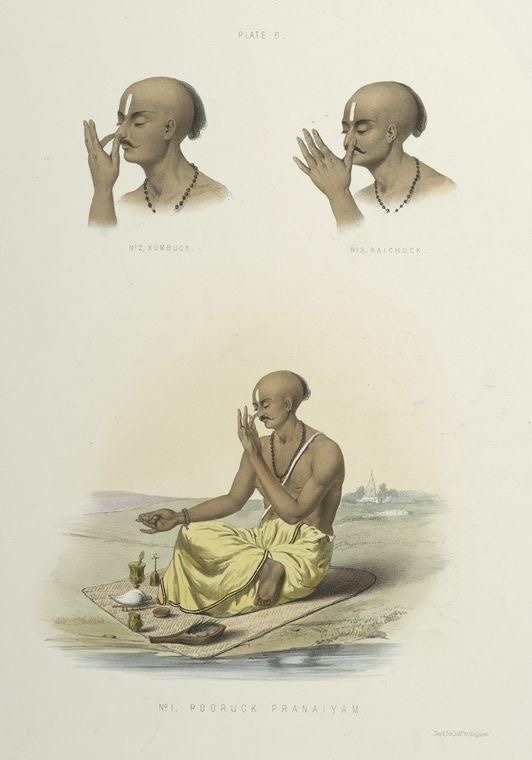#PranaYama
Text

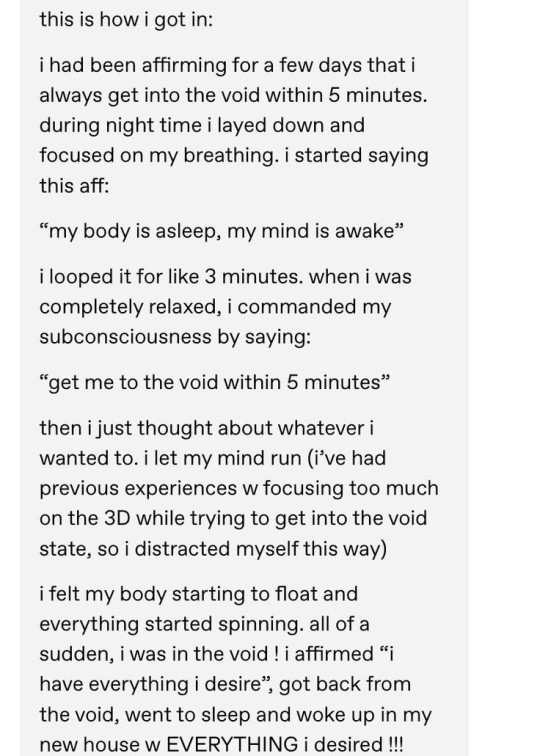
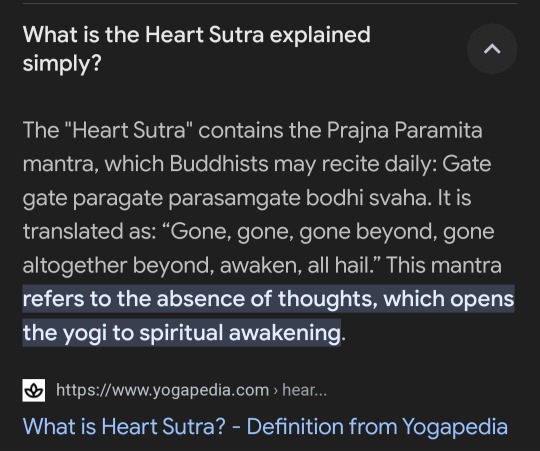


Pranayama breathing technique Is extremely worth It to do so for getting relaxed for the void state ♡♡♡
291 notes
·
View notes
Text

Yogic Breathing
"In the practice of the six yogas of Naropa, a process called "dispelling the impure winds through the nine rounds of breathing" is explained:
First one inhales through the right nostril and exhales through the left, then one inhales through the left and exhales through the right.
First close the left nostril with the back of your right index finger and inhale through the right nostril, and then exhale from the left nostril while blocking the right nostril; after that, block the right nostril with your left index finger and so forth.
During this process, although in reality you are inhaling and exhaling through the nostrils, imagine that the winds come out and go in through the two side channels.
One can also do the practice without blocking the nostrils by hand.
This will calm the force of whatever emotion you have, because it prevents reinforcement of it. The strong force of emotion calming down is just like turbid water becoming clear.
A non-virtuous state of mind should be transformed to a neutral one and then skillfully transformed into a virtuous state."
- Dalai Lama via Shambhala Publications
#buddha#buddhist#buddhism#dharma#sangha#mahayana#zen#milarepa#tibetan buddhism#thich nhat hanh#dali lama#enlightenment spiritualawakening reincarnation tibetan siddhi yoga naga buddha#pranayama
13 notes
·
View notes
Text
What the Dantian/Tanden/Center Actually Means
[A Hopefully Short Thumbnail Sketch]
Thousands of years ago, India and China, the two longest-extant agrarian cultures in the world, discovered some supplements to movement that were undoubtedly energy-saving, particularly for doing long hours of repetitive farming work. The Indus Valley Civilization in India was, as far as we can currently determine, quite a bit older than Chinese civilization, so it’s a reasonable assumption that India developed their theory of movement around “prana” earlier than the Chinese development of the same body properties called “qi”. Regardless, the salient point is that “prana” and “qi”, the focus of discussions about the dantian/tanden/center, are based on real and practical considerations about body mechanics.
Many current discussions about qi/prana/ki focus on the underlying ancient theories about how qi/ki/prana worked, but if we circumvent discussions involving exotic energies, etc., we find that qi/ki/prana is strongly based on reality and practicality. The two basic benefits of qi/ki/prana are that it (1.) provides strength that doesn’t rely on muscles and (2.) manipulates force directions “mentally” (as in “Mind-Body”) so that you can focus your forces where you want them and you can “ground” yourself against pushes.
The powers of strength are from the (dermal) qi/ki itself and the powers of force direction (jin/kokyu/aiki/shakti) are subsidiary abilities of the qi/ki itself. So, in actuality, we’re talking about the dermal qi/ki for supplemental power and a byproduct of qi/ki is the force-direction powers. Another perspective might be that you have qi/ki over the surface of the body and one of the powers of the qi/ki is the ability to manipulate forces either from the solidity of the ground or from the weight of the body pulling downward (both are forces of gravity).
The ki/qi can be manipulated as an elastic connection (sort of like a dancer’s leotard) all over the body, by moving the body and by pulling on the ki/qi connection with the dantian/tanden. Moving the body’s ki/qi with the dantian/tanden is where we derive our talks about “center”, “using the dantian”, and so on.
The essential idea of moving the body with qi/ki and the dantian, while simultaneously using jin/kokyu forces is to use the power of the ground and gravity and the strength from the lower body’s powerful muscles, then to transfer that power using jin/kokyu and the pulling connection of the ki/qi to the arms. In other words, the upper body is totally relaxed while we supply it with power from the lower-body and ground. That dantian/tanden is the controlling nexus of pulls of the qi/ki to the limbs and the controlling nexus of the skeletal structure. All of the so-called “internal martial arts” (the “neijia” arts, in Chinese) have the body controlled by the dantian/tanden.
A person with proper traditional skills of qi/ki and jin/kokyu will have a powerfully developed dantian/tanden. Many of the old pictures of gods, kami, warriors, etc., will show them with a powerfully developed dantian/tanden.
Manipulating force directions mentally is fairly easy to learn. Conditioning and training the body movements with the qi/ki takes much longer to do. Many traditional Asian arts have developed their own approaches to qi/ki development and the jealously guard those training techniques. The power of our jin/kokyu forces increases with proper qi/ki training and supplemental mental practice, so the optimal approach is one that produces strong qi/ki controlled by the tanden, in addition to strong jin/kokyu forces.
It’s worth noting that developing your qi/ki and also your jin/kokyu are essentially skills that increase your strength and power. They are called “internal strength”. Would those skills make your practice of martial arts invincible? No. There is an old saying to the effect that “martial arts without internal strength is not correct; internal strength without proper martial training is not correct, either”.

13 notes
·
View notes
Photo
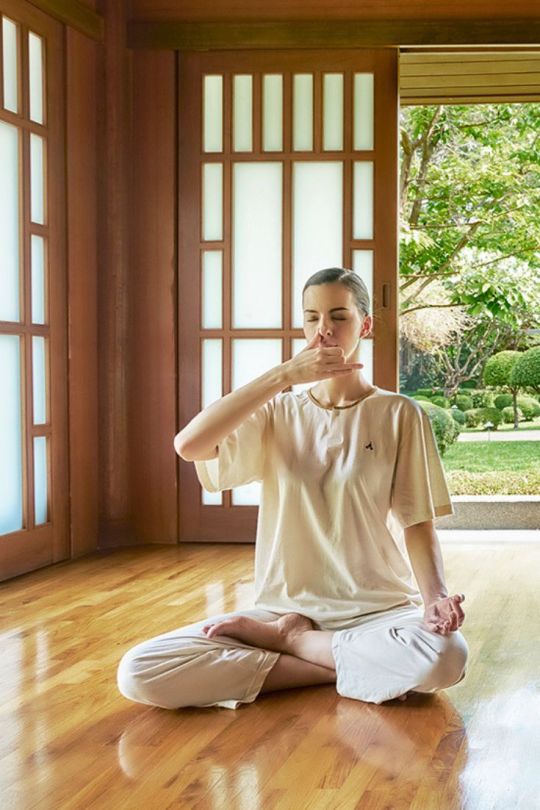
(via 8 Yoga Holidays for the Travel Bucket List | Yoga holidays, Travel workout, Yoga travel || Curated with love by yogadaily)
#pranayama#ardhapadmasana#yoga#yogi#yogini#asana#asanas#yoga pose#yoga posture#inspirational#inspire#motivation#motivational#yoga motivation#yogamotivation#photomanipulation#manifesting#fitness#health and fitness#yoga daily#yogadaily
24 notes
·
View notes
Text

#g#true nourishment#breathwork#holistic health#holistic healing#self care#holistic leveling up#leveling up#spiritual growth#meditation#mindfulness#pranayama
115 notes
·
View notes
Text
“Breathing is not merely an act of living but an art of connecting to the life force that dances quietly within the core of our being, offering solace that is both ancient and ever-new.”
#consciousness#enlightenment#spirituality#spiritualawakening#spiritualenlightenment#interconnectedness#nonduality#philosophy#meditation#mindfulness#breathing#pranayama#the breath of life
6 notes
·
View notes
Text
Book of the Day – Science of Yoga
Today’s Book of the Day is Science of Yoga, written by Ann Swanson in 2019 and published by DK.
Ann Swanson is a yoga therapist, teacher trainer, and expert in self-care. She has always written and taught about science, anatomy, and physiology.
I have chosen this book because I suggested it to a friend who asked for a book about Yoga physiology.
From this perspective, the book Science of…

View On WordPress
#Anxiety#Asana#Body#Body Mind Soul#Book Of The Day#compassion#depression#enlightenment#flexibility#gratitude#Growth#health#Holistic#Holistic Well-being#hormones#inner potential#Mental Health#Mind#nervous system#non-judgment#Philosophy#physical health#physiology#Pranayama#Psychology#Raffaello Palandri#self-realization#soul#spiritual health#strength
2 notes
·
View notes
Text
Master Maha Bhanda: The Ultimate Yoga Energy Lock 🌟
Maha Bhanda, also known as the "Great Lock," is a powerful yoga technique that activates three primary energy locks in the body: Jalandhara Bhanda (throat lock), Uddiyana Bhanda (abdominal lock), and Mula Bhanda (pelvic floor lock). Together, these locks help to control and channel energy, deepening your yoga practice, promoting mindfulness, and enhancing overall well-being. Whether you're a seasoned yogi or just beginning, Maha Bhanda can be a transformative addition to your routine. 🙏
Incorporate this practice to:
Boost energy flow 🌿
Increase mental clarity and focus 🧠
Cultivate inner peace and balance ☯️
Enhance meditation and pranayama 💨
Let Maha Bhanda guide you toward a more centered and empowered version of yourself. Start your journey to deeper mindfulness today.

#Yoga#MahaBhanda#Mindfulness#Meditation#YogaPractice#Wellness#EnergyLocks#Pranayama#SpiritualGrowth#YogaJourney#ZenWaveVibes
2 notes
·
View notes
Text
youtube
Balance of the Hemispheres
#self care#breathwork#pranayama#spiritual#spirituality#self love#meditation#wisdom#yoga#journal#starseed#lightworker#Youtube
5 notes
·
View notes
Text
Anulom Vilom for Weight Loss (Alternate Nostril Breathing)
Pranayama, is a helpful addition to your weight loss journey. Anulom Vilom, also known as alternate nostril breathing, is a common pranayama technique that offers a range of benefits, including potentially aiding weight management.
What is Anulom Vilom?
Anulom Vilom is a simple yet powerful breathing exercise that involves inhaling through one nostril while closing the other, and then exhaling through the opposite nostril. This cycle is repeated for several breaths.

Anulom Vilom for Weight Loss
Stress Reduction: Stress can lead to cortisol spikes, a hormone linked to fat storage. Anulom Vilom's calming effect can help manage stress and potentially reduce cortisol levels.
Improved Digestion: Proper breathing can enhance digestion, allowing your body to absorb nutrients better and potentially reducing bloating.
Increased Energy Levels: Anulom Vilom can improve oxygen intake, leading to more energy for physical activity, which is crucial for weight management.

How to Practice Anulom Vilom:
Find a Comfortable Position: Sit in a comfortable meditative pose with your back straight. You can sit on a chair or the floor.
Prepare Your Hands: With your right hand, gently fold your index and middle finger towards your palm.
Close One Nostril: Place your thumb on your right nostril and your ring finger on your left nostril.
Inhale Through Left Nostril: Close your right nostril with your thumb and inhale slowly and deeply through your left nostril.
Retain and Switch Nostrils: Hold your breath for a comfortable moment (avoid straining). Close your left nostril with your ring finger and release your thumb.
Exhale Through Right Nostril: Exhale slowly and completely through your right nostril.
Repeat the Cycle: Inhale through your left nostril again, then retain, switch nostrils, and exhale through the right. This completes one round.
Practice: Aim for 4-5 rounds initially and gradually increase as you get comfortable.
Tips:
Focus on your breath throughout the exercise.
Maintain a slow and steady breathing pace.
If you feel any discomfort, stop the exercise and consult a healthcare professional.

Anulom Vilom is a complementary practice. For effective weight loss, combine it with a healthy diet and regular exercise. Consult a doctor or registered dietitian for personalized guidance on diet and fitness plans.
#weight loss#weight goals#amazing body#waightloss#pranayama#weight#weight management#fat loss#exercise
2 notes
·
View notes
Text

"Great masters presented examples on overcoming ignorance. They taught that it is like being in a dark room and mistaking a rope for a snake. As a result, one is very frightened and suffers. How can one become free of this suffering? Taking a knife or weapon will not help. Having a bottle of poison to kill the snake will not help either. What will help? Examining what one sees and in that way discovering that the rope in the dark room is not a snake. Then one will no longer be afraid and will stop suffering. In the same way, if we continue believing in an inherently existing self of an individual and phenomena, we will experience fear and will suffer. As long as we adhere to the belief in a self, we will suffer. Only wisdom of selflessness will bring freedom from all kinds of suffering."
~ Khenchen Thrangu Rinpoche
From: "Gaining Certainty of the View"
#buddha#buddhist#buddhism#dharma#sangha#mahayana#zen#milarepa#tibetan buddhism#thich nhat hanh#tantric#pranayama#prostration#Padmasambhava#amitaba#avalokiteshvara#Dakini#Dzogchen#four noble truths#guru rinpoche#heart sutra#vajrasattva#mind training#meditation#medicine buddha#manjushri#merit#Dilgo Khyentse Rinpoche
54 notes
·
View notes
Photo

(via Beginner's Guide to Pranayama - YOGA PRACTICE || Curated with love by yogadaily)
#pranayama#breath#padmasana#yogabun#yoga#yogi#yogini#yogaaesthetic#yogainspiration#yogaposes#aesthetic#inspiration#inspire#inspirational#motivation#yogamotivation#manifestation#manifest#manifesting#yogadaily#fitness#Health & Fitness
34 notes
·
View notes
Text
4月14日(日)午後 クライブ・シェリダンのサットサンガ(ヨガ講話)東京
Clive Sheridan : Tokyo Yoga Satsanga at Tsukiji on 14th April

隅田川沿いの夜景 (Dec 2021, Tokyo)
Tokyo Ganga at night
日時:4月14日(日)13:30 ~ 16:00
場所:東京都中央区 築地
<日本語の通訳が入ります>
プログラム
13:15 開場
13:30〜16:00 プラーナヤーマ、瞑想、サットサンガ
(プラーナヤーマ、瞑想を約1時間、残りの時間はサットサンガ)
内容
クライブ・シェリダン先生のサットサンガが4月14日(日)の午後に、東京の築地で急遽、開催されることになりました。
1960年代よりインドに通い、ヨーガを修めてきたクライブがヨーガのお話をいたします。サットサンガはサンスクリット語で「真理の集い」と言った意味ですが、簡単に言えばヨーガの学びをシェアする機会です。 ヨーガの中でも様々な分野がありますが、彼がサットサンガで主に語る内容は、ヨーガの実践に必要な基本的な留意事項、プラーナヤーマの活用法、瞑想の実践、セルフ・リアライゼーション(自己実現/モクシャ(解脱))と非二元論(不二一元論=アドヴァイタ・ヴェーダンタ)やタントラ(日本では密教とも訳されますが、チャクラなどを活用したクンダリーニの覚醒についてなど)、そして女神を中心としたインドの神々を巡る神話的世界です。
今年の秋、10月に静岡県浜松市と東京都奥多摩の御岳山でワークショップとリトリートがありますが、ご関心のある向きはぜひ足をお運びください。
お申し込み&お問合せ先
enquiry(@)wonderyoga.jpn.org
上記アドレスの@マーク前後の(カッコ)を外してお送りください
持ち物など
アーサナは行わないのでヨガウエアは不要ですが、多少座りますので、座りやすい衣類がオススメです。会場に座布団はございますが、ヨガブロックなどはございません。必要な方はご持参ください。
主催
Pranayama Sanga, PranaMotion & WonderYoga*
2 notes
·
View notes
Text
What is Pranayama

Pranayama, an integral aspect of yoga, refers to the practice of controlling the breath. Derived from the Sanskrit words "prana" (life force) and "ayama" (extension), Pranayama techniques involve conscious regulation of inhalation, exhalation, and retention of breath. It holds profound benefits for physical, mental, and spiritual well-being.
If You Want To Learn How to Do Pranayama: Please Visit Ekam Yoga
2 notes
·
View notes
Text
30 Days Yoga Challenge For Beginners
Benefits of 30 Day Yoga Challenge:
Yoga enhances circulation, supports healthy joints, and promotes overall bodily vitality.
Physical Well-Being: Over the course of 30-days, practicing yoga every day produces amazing physical results. It enhances balance, strength, and flexibility. Asanas target different muscle groups, which help tone and shape the body.
Mental Clarity and Stress Reduction: When combined with mindful breathing exercises, the meditative elements of yoga promote emotional and mental equilibrium. By controlling the body's stress response system, regular practice has been demonstrated to lower stress levels. This results in mental clarity and a more optimistic view on life.
Enhanced Respiratory Functions: The awareness and control of breath is highly valued in yoga. Lung capacity increases with exercises such as pranayama (breath control techniques), which enhance respiratory function. This may result in more vitality and a stronger sense of wellbeing.
Improved Sleep Quality: Yoga's relaxation practices, especially in the last pose, Savasana, prime the body for sound sleep. Practitioners frequently report better sleep quality and a more regular sleep pattern after 30 days.
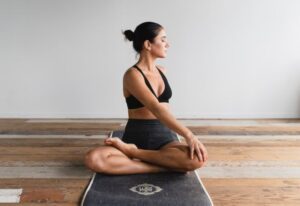
Increases Self Awareness: Self-analysis and introspection are encouraged by yoga. People develop a greater awareness of their own bodies, minds, and emotions via mindful practice. Better choices and actions can result from this increased self-awareness.
Strengthened Mind-Body Connection: Yoga emphasizes the connection of mind, body, and breath, and is therefore an embodiment practice. The mind-body connection is strengthened and a sense of harmony and togetherness is fostered by this increased awareness of physical sensations and movements.
Cultivation of Discipline and Consistency: Making the commitment to a 30-day yoga challenge develops consistency and discipline. It creates a schedule that lasts past the challenge period and lays the groundwork for a lifetime of yoga practice.
#yoga#100 hour yoga teacher training in goa#meditation#30 day yoga challenge#yoga benefits#yoga beginners#pranayama
3 notes
·
View notes
